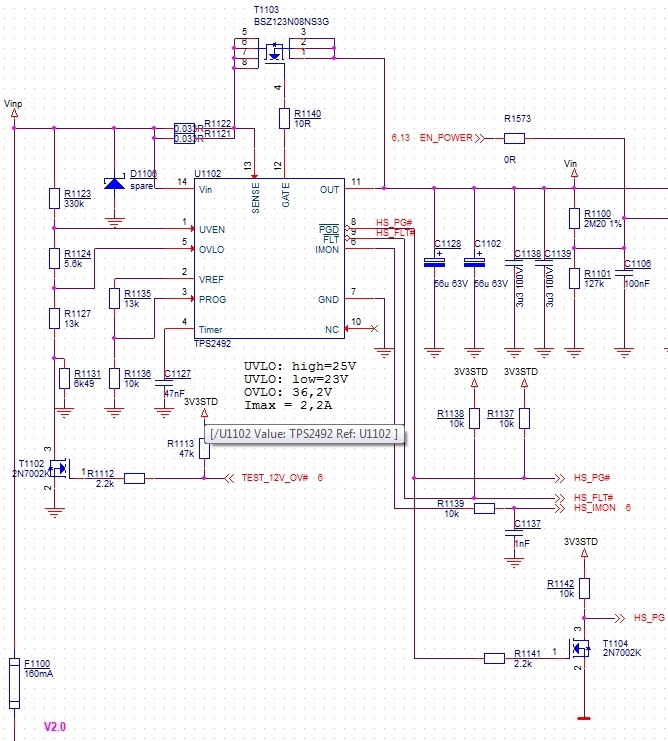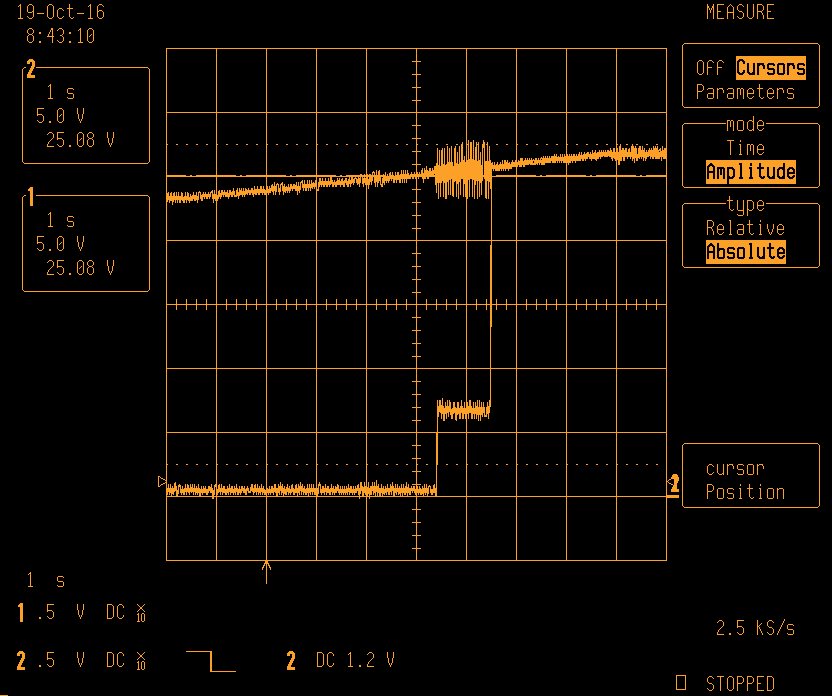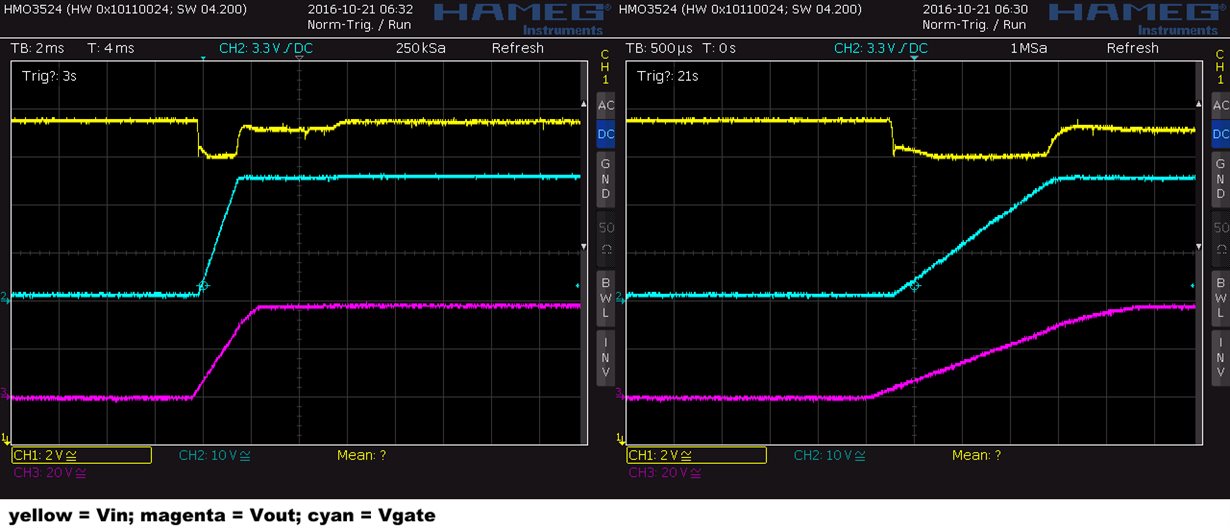Hello.
in our board we use the TPS2492L as eFuse. The UV/OV conditions are: undervoltage switch on (rising) = 25,5V, undervoltage switch off (falling) = 23,4V and overvoltage = 36V. With I typ = 3,03A. If I increase the input voltage (at 25,5V) the controller switch on the FET only at half, I can measure about 6V on source. Above 25,7V input voltage the FET will be switched fully on and I can measure the input voltage. Is this behaviour normal and what can I do to avoid this?
Thank you for your help.
BR






